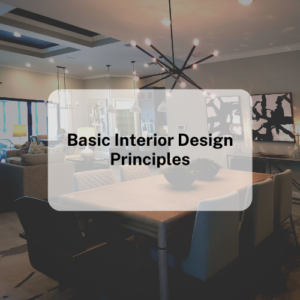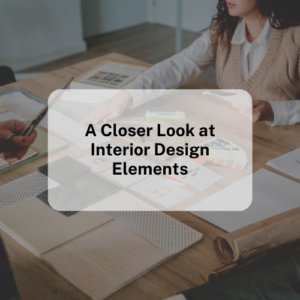7 Interior Design Elements to Enhance Your Home
Interior design is all about creating a space that is both functional and aesthetically pleasing. By incorporating the right interior design elements, you can transform your home into a beautiful and inviting space that reflects your personal style. Color, lighting, texture, pattern, furniture, artwork, and accessories are all important elements to consider when designing your home.
By choosing the right color scheme, lighting sources, textures, and patterns, you can create a space that is visually interesting and comfortable. The right furniture pieces can also make a big impact on the overall look and feel of your space, while artwork and accessories can add the finishing touches and create a cohesive look. By incorporating these design elements into your home, you can create a space that is not only beautiful but also functional and reflective of your personal style.
Basic Interior Design Principles

Basic interior design principles are the foundation of creating a beautiful and functional space. In this article, we’ll explore some of the key principles of interior design that can help you create a cohesive and visually appealing home. These principles include:
- Balance: Achieving balance in your space means creating a sense of equilibrium between the different elements in your room, such as color, texture, and furniture. There are three types of balance: symmetrical, asymmetrical, and radial.
- Harmony: Harmony in interior design refers to the overall feeling of unity and cohesiveness in your space. It can be achieved through repetition, color schemes, and texture.
- Proportion: Proportion refers to the relationship between the different elements in your room, such as the size of your furniture and the size of your space. It’s important to create a sense of proportion to avoid a cluttered or disproportionate look.
- Contrast: Contrast is the use of opposing elements to create visual interest in your space. For example, you might use a bold color against a neutral backdrop, or mix and match different patterns and textures.
- Rhythm: Rhythm in interior design refers to the repetition of certain elements, such as colors, patterns, or shapes. It creates a sense of movement and flow in your space.
- Emphasis: Emphasis refers to creating a focal point in your room, such as a piece of artwork or a striking piece of furniture. It draws the eye and adds visual interest to your space.
By understanding these basic principles of interior design, you can create a space that is not only visually appealing but also functional and comfortable. Whether you’re starting from scratch or simply looking to update your existing space, these principles can help guide your design decisions and create a beautiful home.
A Closer Look at Interior Design Elements

Interior design elements are the building blocks of creating a cohesive and visually appealing space. In this article, we’ll take a closer look at some of the most essential elements of interior design, including color, texture, pattern, lighting, and furniture.
Color is one of the most important elements of interior design, as it can create mood, define space, and reflect personal style. Texture, on the other hand, adds depth and visual interest to a space, and can be achieved through fabrics, finishes, and materials. Patterns can be used to add a sense of movement and visual appeal and can be incorporated through textiles, wallpaper, or artwork.
Lighting is also a crucial element in interior design, as it can create ambiance, highlight key features of a space, and improve functionality. From natural lighting to accent lighting, there are many options to consider when designing your space.
Finally, furniture is a key element of interior design, as it defines the function and layout of a space, as well as adds style and personality. Choosing the right furniture pieces, such as sofas, chairs, and tables can greatly impact the overall look and feel of your home.
By understanding these key elements of interior design and how they can be used together, you can create a space that is not only functional but also visually appealing and reflective of your personal style.
In addition to the elements of interior design mentioned above, there are several other important factors to consider when creating a well-designed space. These include:
- Unity: Creating a sense of unity and cohesiveness throughout a space can be achieved through the use of color, texture, and pattern. Repeating certain elements throughout a room can help tie the space together and create a sense of harmony.
- Functionality: While aesthetics are important in interior design, functionality is also a key consideration. Creating a space
- Mood: The mood of a space is an important consideration when designing your home. Whether you’re looking to create a calming retreat or a lively and energizing space, the elements of interior design can be used to achieve the desired mood.
- Sustainability: With increasing awareness of environmental concerns, sustainability has become an important consideration in interior design. Using eco-friendly materials, reducing waste, and choosing energy-efficient lighting and appliances are just a few ways that interior designers can help create more sustainable homes and reduce their impact on the environment.